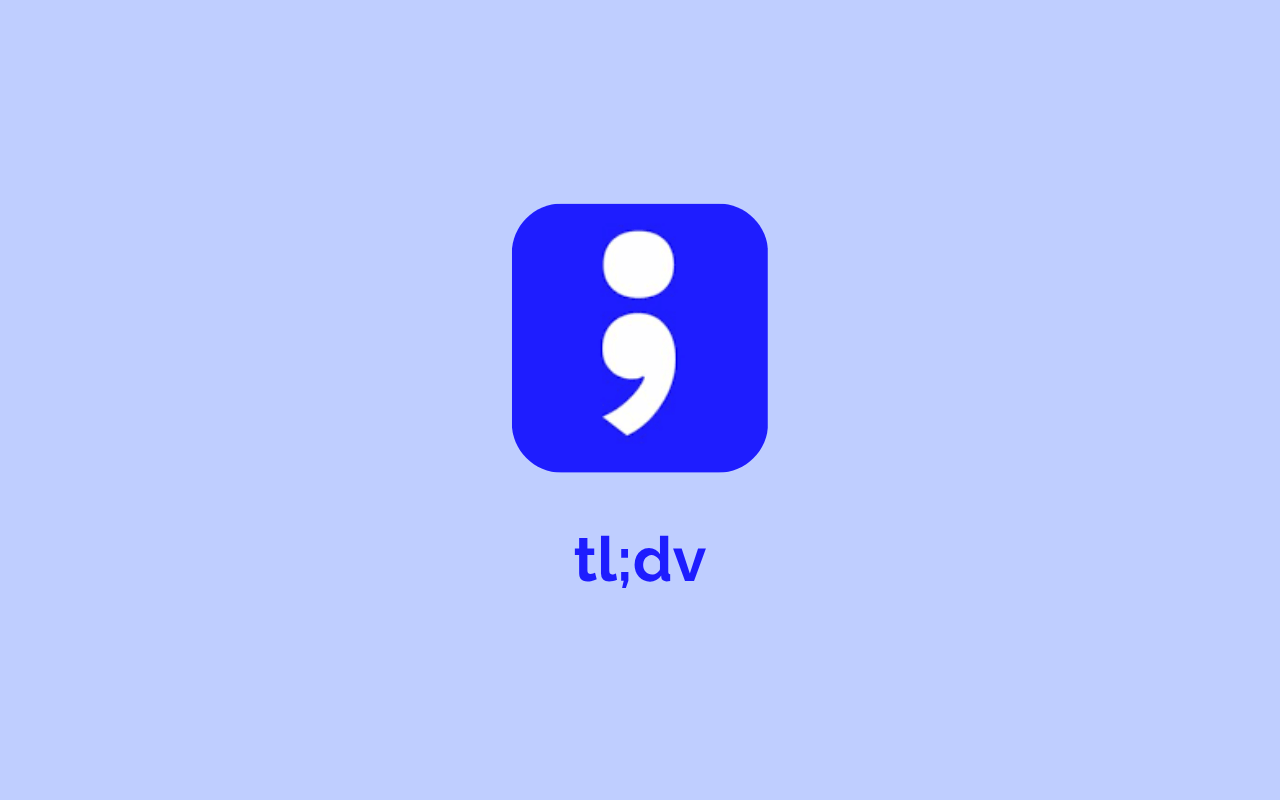Was ist eine Produktdemo?
Eine Produktdemo ist eine Live- oder aufgezeichnete Präsentation, in der einem potenziellen oder aktuellen Kunden die wichtigsten Funktionen, Fähigkeiten und der Wert eines Produkts vorgestellt werden. Ihr Hauptzweck besteht darin, zu demonstrieren, wie das Produkt die Probleme des Kunden lösen und letztendlich zu einer Kaufentscheidung führen kann.
Die Produktdemo oder Verkaufsdemo ist das wichtigste Element im Verkaufsprozess eines B2B-SaaS-Unternehmens. Es ist eine einzigartige Gelegenheit, einem potenziellen Kunden den Wert Ihres Produkts zu demonstrieren.
Produktdemos sind für jeden Softwareverkaufsprozess von zentraler Bedeutung. Schlecht ausgeführte Demos verlangsamen die Abschlussraten erheblich. Andererseits können sie, wenn sie richtig gemacht werden, sehr effektiv sein.
Im Wesentlichen macht die Demo oft den Unterschied zwischen dem Abschluss eines Geschäfts und dem Verlust eines Interessenten aus. Eine großartige Demo zeigt Ihren Interessenten, wie Ihre Lösung ihre Probleme wirklich löst und es ihnen ermöglicht, in ihrer Arbeit erfolgreicher zu werden.
Als Geoffrey James sagt: „Es gibt fast nichts Mächtigeres als eine großartige Produktdemonstration. Richtig gemacht, kann der Kunde anhand einer Demo sehen und spüren, dass es besser wird, wenn er kauft (und schlechter, wenn er es nicht tut).“
Warum ist die Demo ein so wichtiges Element im B2B-Verkaufsprozess? Und welche Auswirkungen hat es, wenn man es richtig oder falsch macht? Bevor wir uns mit den Details befassen, wollen wir zunächst Gemeinsamkeiten festlegen und die Grundlagen klären.

Was ist der Unterschied zwischen einer Produktdemo und einer Verkaufsdemo?
Kurz gesagt, es ist dasselbe. Andere Wörter, die verwendet werden, sind Produktdemonstration, SaaS-Demo, oder einfach nur „Demo“.
Aber je nachdem, wen Sie fragen, erhalten Sie möglicherweise eine andere Antwort. Hubspot unterscheidet zum Beispiel die Produktdemo deutlich von der Verkaufsdemo „Bei einer Verkaufsdemo wird einem Interessenten Ihr Produkt oder Ihre Dienstleistung vorgeführt. Eine Produktdemo ist derselbe Prozess, an dem jedoch ein aktueller Kunde beteiligt ist.“
Die meisten SaaS-Vertriebsleiter, darunter Steli Efti, Jacco van der Kooji, Pieter Kazanjy, oder Craig Rosenberg Beziehen Sie sich immer auf die „Demo“ als wichtiges Verkaufsinstrument - das ist die Präsentation für einen potenziellen Kunden -, ohne insbesondere zwischen Produktdemo und Verkaufsdemo zu unterscheiden.
Wer liefert eine Produktdemo?
In den meisten Unternehmen führt der Vertriebsmitarbeiter — oder genauer gesagt der Kundenbetreuer — die Demo durch. In kleinen Unternehmen und Startups in der Frühphase ist es oft der Gründer, der die Demo durchführt.
Wann liefern Sie eine Produktdemo?
Die Demo findet in der Regel statt, nachdem ein Lead qualifiziert wurde. Es gibt viele verschiedene Möglichkeiten, Leads zu generieren. Aber für die meisten B2B-SaaS-Unternehmen ist Vertriebsinnendienst Prozess sieht sehr ähnlich aus:
- Lead-Generierung: Sie erhalten einen eingehenden oder ausgehenden Lead
- Entdeckung: Sie qualifizieren diesen Lead, d. h. überprüfen, ob er/sie Ihrem idealen Kundenprofil entspricht
- Pitch: Sie demonstrieren dem Interessenten den Wert der Software. Zu diesem Zeitpunkt findet die Produktdemo statt
- Umwandlung: Sie wandeln die Opportunity um, d. h. schließen den Vertrag
Für diejenigen, die neu sind Vertriebsinnendienst, hier ein Beispiel: Jemand besucht Ihre Website, also ein Besucher. Dieser Besucher füllt ein Kontaktformular aus, weil er an dem Produkt oder der Dienstleistung interessiert ist, die Sie auf Ihrer Website bewerben, also an einem Lead. Sie analysieren die Informationen, die Sie über diesen Lead haben, wie z. B. Branche, Unternehmen, Rolle, Standort, Bedarf an Ihrem Produkt oder Ihrer Dienstleistung und Kaufberechtigung.
Wenn der Lead Ihrem idealen Kundenprofil entspricht, wird er zu einem qualifizierten Lead. Nachdem Sie eine Demo mit dem qualifizierten Lead durchgeführt haben, wird er zu einer Geschäftschance. Der letzte Schritt besteht darin, diese Gelegenheit zu nutzen, indem Sie ihr zusätzliche Ressourcen zur Verfügung stellen und sie schließlich dazu bewegen, den Vertrag zu unterzeichnen, um Kunde zu werden.
Hier ist eine nette Grafik, die das visualisiert Vertriebsinnendienst Trichter.

Wie biete ich eine Produktdemo an?
Das Gesicht des B2B-Softwareverkaufs hat einen Wandel hinter sich massive Abkehr vom traditionellen Außendienst zu Vertriebsinnendienst in den letzten zehn Jahren. Heute ist das dominierende Vertriebsmodell im Bereich B2B-Technologie Vertriebsinnendienst: Verkäufe, die per Telefon, E-Mail und Online-Meeting-Tools aus der Ferne abgewickelt werden.
In den meisten Fällen werden SaaS-Demos über Online-Meeting-Tools bereitgestellt, die Bildschirmübertragung, Audio, Video von Angesicht zu Angesicht, Chat und mehr nutzen.
Viele Unternehmen verwenden immer noch Allzweck-Tools für Online-Besprechungen wie GoToMeeting, Zoom oder Hangouts. Es gibt eine neue Generation von Online-Meeting-Tools, die anwendungsfallspezifische Vorteile gegenüber allgemeinen Tools bieten — wie Demodesk für Demos und Onboarding. Die Funktionen sind interaktive virtuelle Besprechungen, automatische Terminplanung, Vertriebscoaching, und viele mehr.
Warum ist die Produktdemo so wichtig in der B2B-SaaS Verkaufsprozess?
Die Bedeutung der Produktdemo im Verkaufstrichter hängt von verschiedenen Faktoren ab.
Der größte Treiber ist der ACV (Annual Contract Value). Er ist definiert als der durchschnittliche Jahresumsatz pro Kundenvertrag ohne einmalige Gebühren.
Natürlich müssen bei der Auswahl des richtigen Vertriebsmodells weitere Kriterien berücksichtigt werden, aber In der Regel ist es bei einem ACV von <1.000 $ in der Regel nicht sinnvoll, mit Ihrem Interessenten an einer personalisierten Produktdemo zu teilnehmen.
Warum? Weil die Bereitstellung einer personalisierten Demo Sie Ressourcen kostet. Es ist eine erhebliche Investition, die Sie in Ihren potenziellen Kunden tätigen. Es zahlt sich nur aus, wenn die potenzielle Rendite hoch genug ist.
„Ihr SaaS-Vertriebsmodell sollte auf Self-Service abzielen. Sie müssen ein reibungsloses Produkt entwickeln, das mit einem Motor für hohe Stückzahlen, hohe Geschwindigkeiten und eine kostengünstige Leadgenerierung einhergeht. Das Transaktionsmodell ist ein Hybridmodell, da es einen Motor für die Leadgenerierung mit hohem Volumen und hoher Geschwindigkeit erfordert. Dank eines höheren ACV (in der Regel über 3.000$) können Sie jedoch mehr für die Akquise ausgeben, ergänzt durch ein Vertriebsteam, das Produktvorführungen vornimmt und Geschäfte abschließt.“
- Clément Vouillon

Wenn Sie also einen durchschnittlichen ACV von mehr als 1.000$ haben, ist die Demo zweifellos das stärkste Element in Ihrem Verkaufsprozess, und hier ist der Grund dafür.
Bestimmen Sie Ihr SaaS-Vertriebsmodell
SaaS-Produkte unterscheiden sich in Preis und Komplexität. Bevor Sie Ihren Verkaufsprozess definieren und optimieren können, müssen Sie herausfinden, welches Modell zu Ihrem Unternehmen passt, damit Sie die beste Methodik für Ihr SaaS-Angebot entwickeln können. Es gibt drei wichtige SaaS-Vertriebsmodelle, die wir uns einzeln ansehen werden.
Self-Service-SaaS
Self-Service-SaaS bezieht sich auf kostengünstigere und benutzerfreundliche Software, die von neuen Benutzern leicht verstanden und verwaltet werden kann. Es erfordert wenig bis gar keinen Vertriebsaufwand, da die Kunden bereits den Wert Ihres Produkts erkennen, sich mit einfachem Onboarding selbst registrieren und Schulungsinhalte oder Kundensupport nutzen, um Probleme zu lösen. Beispiele für Self-Service-SaaS-Modelle sind Slack, TurboTax und Dropbox.
Transaktionale SaaS
Transaktionale SaaS-Produkte sind teurer (< 5.000$ in ACV) und für den Benutzer komplexer, um selbstständig zu lernen. Diese Produkte verkaufen sich nicht von selbst. Sie benötigen ein Vertriebsteam, das Leads entwickelt und Ihr Produkt vorführt, um einen Verkauf abzuschließen. Aufgrund des höheren Preises und der Notwendigkeit eines persönlicheren Verkaufsgesprächs erwarten Käufer gut ausgebildete Vertriebsmitarbeiter mit ausgeklügelten Produktvorführungen, Produktschulungen, Dokumentation und Kundensupport. Transaktionale Vertriebsmodelle sind in der Regel mit hohem Risiko und hoher Rendite verbunden und bieten einen Durchschnitt Verkaufszyklus von 30 Tagen.
SaaS für Unternehmen
Diese erstklassigen SaaS-Produkte oder -Services sind mit Anpassungselementen ausgestattet, um sie in den Technologie-Stack eines Unternehmens zu integrieren. Sie können extrem kompliziert zu implementieren sein und sind oft entsprechend teuer. Dieser SaaS-Verkaufszyklus ist für den Vertrieb von B2B-Unternehmen vorgesehen und der längste und komplexeste. Mittelständische bis große Unternehmen sind die Käufer, und die größte Herausforderung besteht häufig darin, einen Konsens zwischen vielen Entscheidungsträgern mit Kaufkraft herzustellen. Dieser Verkauf erfordert einen intensiven technischen und vertrieblichen Support sowie eine Team von Vertriebsexperten, einschließlich eines Vertriebsbeauftragten (SDR oder BDR) zur Pflege und Qualifizierung von Leads und eines Kundenbetreuers (AE), der die Demo durchführt und den Verkauf abschließt.
Wie verbessern Produktdemos die Abschlussraten?
Die Produktdemo zu meistern ist keine leichte Aufgabe. Es erfordert ein gutes Verständnis des Produkts, das Sie verkaufen, der Kundin, ihrer spezifischen Herausforderungen und Erwartungen sowie die Fähigkeit, eine Beziehung aufzubauen.
Als Bob Falcone sagt es, ungefähr 10% deiner Demos werden trotzdem großartig laufen. Entweder hast du schon einmal mit der Person gearbeitet, oder der Raum versteht einfach, was du beim ersten Mal sagst. Weitere 10% gehen pleite, egal was du tust. Sie präsentieren dem falschen Publikum die falsche Lösung. Es lohnt sich nicht, weiter zu verweilen und daraus Lehren zu ziehen, denn sie wären den Bach runtergegangen, egal was passiert. Aber dann sind da noch diese 80% in der Mitte, wo Sie den größten Teil Ihres Geldes verdienen und wo Sie gewinnen müssen.
Für diese 80% der Kunden macht es also einen großen Unterschied, ob Sie eine großartige Demo anbieten oder nicht. In vielen Fällen ist die Demo entscheidend für den Gesamterfolg des Unternehmens. Lassen Sie uns die finanziellen Auswirkungen einer erfolgreichen Produktdemo auf das Umsatzwachstum anhand der Mathematik erklären.
Hier sind einige Statistiken für B2B-SaaS-Unternehmen gemäß einem umfassende SaaS-Umfrage, die David Skok und KBCM Technologies durchgeführt haben:
- Die durchschnittliche Anzahl der von einem SaaS-Unternehmen veranstalteten Demos variiert je nach Größe des Deals und liegt zwischen 4 und 11 pro Woche
- SaaS-Unternehmen mit einem ACV von <5.000 $ führen durchschnittlich 11,3 Demos pro Woche durch.
- Bei einem ACV über 100.000$ liegt die durchschnittliche Anzahl der abgehaltenen Demos bei nur 3,6 Demos pro Woche
- Der durchschnittliche jährliche Vertragswert (ACV) privater SaaS-Unternehmen liegt bei ~21.000 $, wobei 26% der Befragten unter 5.000$ und 13% über 100.000$ liegen
- Bei den meisten B2B-SaaS-Unternehmen liegen die Abschlussraten für Demos zwischen 20 und 50%

Lassen Sie uns nun die Statistiken von oben heranziehen, um zu berechnen, wie sich das Mastering Ihrer Produktdemo auswirkt.
Wenn Sie 7 Demos pro Woche durchführen und von einem ACV von 21.000 USD ausgehen, haben Sie einen potenziellen Dealflow von 7 mal 21.000 USD pro Woche.
In unserem Beispiel entspricht das einem Opportunitätswert von 147.000 USD pro Woche, was einem jährlichen Wert von 7,6 Mio. USD entspricht.
Wenn Ihr Vertriebsteam mit einer Demo-Abschlussrate von 20% am schlechtesten abschneidet, führt dies zu einem potenziellen Umsatz von 1,5 Mio. USD.
Im Gegensatz dazu generiert ein leistungsstarkes Vertriebsteam mit durchschnittlichen Demo-Abschlussraten von 50% jährliche Verkaufschancen in Höhe von 3,8 Mio. USD.
Das führt zu einem Unterschied von 2,3 Mio. $. Für ein unterdurchschnittliches Vertriebsteam ist das also ein potenzieller Verlust von 2,3 Mio. $. Mit anderen Worten, für ein durchschnittliches B2B-SaaS-Unternehmen kann die Verbesserung der Abschlussraten für Demos eine Umsatzsteigerung von mehr als 50% bedeuten.
Hier ist die Formel, wenn Sie die Auswirkungen einer Verbesserung der Konversionsraten für Produktdemos auf Ihr Unternehmen berechnen möchten:
(50% — Ihre aktuelle Demo-Abschlussrate in%) * ACV * Anzahl der Demos/Woche * 52 = Verlust von Verkaufschancen auf Jahresbasis

So meistern Sie die Produktdemo
Die Demo zu meistern ist sicherlich keine leichte Aufgabe. Eine erfolgreiche SaaS-Produktdemo ist mehr als die Erläuterung des Leistungsversprechens, eine Komplettlösung und die Positionierung Ihres Produkts gegenüber der Konkurrenz. Vertriebsmitarbeiter müssen sich an die Bedürfnisse des Interessenten anpassen und zeigen, wie Ihr Produkt ihnen hilft, ihre Probleme zu lösen.
Und vor allem ist es eine Gelegenheit für potenzielle Kunden, Sie kennenzulernen und zu beurteilen, wie zuverlässig Ihr Produkt einen Mehrwert bietet. Personalisierte Produktdemos sind eine großartige Gelegenheit Binden Sie Ihren Interessenten ein und bauen Sie letztendlich eine Beziehung zu Ihrem potenziellen Kunden auf. Schließlich 71% der Kunden kaufen, weil sie den Verkäufer, mit dem sie zusammenarbeiten, mögen, ihm vertrauen und ihn respektieren.
„Entgegen der landläufigen Meinung besteht das Hauptziel einer Demo nicht darin, Ihr Produkt zu demonstrieren! Lassen Sie mich das noch einmal sagen: Das Ziel der Demo besteht nicht darin, Ihr Produkt zu demonstrieren. Die Leute kaufen keine Funktionen, sie kaufen Lösungen, Vertrauen und Beziehungen. “
Was macht also eine herausragende Produktdemo aus? Es gibt viele Dinge zu lernen und zu berücksichtigen, und es gibt mit Sicherheit keinen einheitlichen Ansatz.
Wir helfen Ihnen dabei, die Demo zu meistern, ohne unzählige schmerzhafte Trial-and-Error-Iterationen durchführen zu müssen. Wir haben kompiliert Best Practices für Produktdemos und Industriestandards in einer umfassenden SaaS-Demo-Anleitung. Lesen Sie mehr darüber in unserem nächstes Kapitel.
Möchten Sie sehen, wie Sie Ihre Verkaufsdemos wirklich verbessern können? Testen Sie Demodesk kostenlos und sehen Sie, warum unsere Kunden von uns schwärmen.

%201.avif)




.png)






